In order to emerge stronger from a year-long pandemic that has exacerbated the country's socio-economic situation, we should focus on putting young people first. We can better prepare them for the current job market by focusing on the technical and transversal skills needed to tackle complexity and the ongoing digital transformation. This is the approach proposed by Alessandro Rosina, an expert on youth issues and school-to-work transition policies, together with the viewpoint of Michael Heister, director of the German Federal Institute for Vocational Education and Training (BIBB Bundesinstitut für Berufsbildung), both guests at an event organised by StartNet on 19th March, which coincides with the end of Didacta Italia 2021.
By Gaia Fiertler
Paradoxically in Italy, the demand for digital skills and technical expertise from many emerging professions remains unfulfilled at the same time as youth unemployment and NEET rates are well above the European average. Both the education system and the school-to-work transition programmes are failing to adequately prepare young people for the current labour market; a situation at risk of deteriorating even further after more than a year of distance learning and a notable downturn in recruitment. With the Covid situation going on for more than a year now, the Italian NEET rate has started to rise again reaching 23.9% after a 2019 decrease to 21.2%. This means that in Italy, 1 in 4 young people aged 15 – 29 is neither studying nor working compared to a European average of 12%. The dropout rate following lower secondary school also remains high but stable for now (13.5%), but a lack of equal access to online education and computer equipment is threatening to make the situation even worse. For example, 8% of students of all ages have been left out of distance learning this year, rising to 23% for students with disabilities (ISTAT data). In the face of profound shifts in the economy and with complex markets, exponential technological innovation and the rapid obsolescence of skills, there are two fundamental factors that we need to address according to Alessandro Rosina, Professor of Demography at the Catholic University of Milan and guest speaker at the StartNet Italia meeting scheduled to take place at Didacta on 19th March at 2.30 pm. The first goal should be a new teaching model geared towards collaboration and problem-solving. And secondly, the creation of a network of all players involved in education programmes and the school-to-work transition from robust career guidance all the way up to apprenticeship, with a focus on skills acquisition in line with today’s labour market.
Challenges for the school system: engaging young people and training them in problem solving
Today's labour market calls for both strong technical skills as well as soft skills such as problem-solving, flexibility, creativity, entrepreneurship and the ability to work in a team. In a world that constantly poses new challenges, how can we ensure young people engage and find solutions? "The teaching methods need to change by moving away from the classroom lecture approach towards a more workshop-based, experimental approach where learning is hands-on and where making mistakes and trying again is part of a dynamic and adaptive learning process. But even more fundamentally, if we want to engage students and reduce the risk of dropping out, we need to understand the anthropological shift taking place. Today's young people have different needs, values, behaviours and learning practices compared to 15 years ago. To be fully engaged, they are willing to take a lead role and participate actively, but at the same time they are easily demotivated if lacking positive external encouragement: from the trust of the educator, cognisant of each individual’s unique and valuable contribution, to the positive examples of other young people who go on to find success in the labour market after dedicating themselves to their studies” explains Rosina.
The value of networked experiences
And this is where the second fundamental factor comes in: the systematic networking of local experiences in order to spread good practices as well as effectively bringing all upstream players involved in the school-to-work programme together, from schools to businesses and on to employment centres. For example, there are high hopes for the ITS system (Technical Vocational Training Institutes), the Italian approach to vocational training inspired by the German Fachhochschule, because the approach is effective. Essentially, the best examples of innovation in Italian companies are made available to specialised two-year post-diploma courses to provide young people with advanced technical skills through company teaching. This makes them attractive to the labour market with a six month post-graduation employment rate that exceeds 90% in the most popular fields such as mechatronics and ICT. The numbers are still small (10,000 students enrolled), but the aim is to increase the number of classes and to tailor the courses to the professional demands of the market.
The German dual model also focuses on digitalisation
The dual model for vocational training in Germany has proved successful and has been well established for decades, but in recent years it has been facing new challenges due to a changing labour market, the digitalisation of production systems and the difficulties posed by the year-long Covid pandemic. "Up until twenty years ago, the main way of getting into the labour market was through three years of company-funded apprenticeships while simultaneously attending vocational schools, with a high percentage starting out very early at the age of 14. Today, things have changed somewhat" says Michael Heister, departmental director of the German Federal Institute for Vocational Education and Training (BIBB). Nowadays, one in two students go to secondary school with the remainder going to other schools. Only 30% of diploma holders (including short diplomas) go on to dual vocational training with the rest starting work or university. "With the growing demand for the specialised and digital skills of Industry 4.0, there is a trend towards hiring recent three-year graduates from technical universities, the Fachhochschule, involving 9-10 months of apprenticeship," Heister explains.
Germany has a well-structured career guidance system which helps young people in discovering their aptitudes by trying out three companies in different sectors for a fortnight. Support is then available from retired professionals during their apprenticeships, who help the students complete their vocational training programmes. This system is helping to counteract school drop-out rates (10% in Germany, rising to 25% in the first six months of the apprenticeship, but being converted into other courses) and to curb the NEET rate, which stands at 15%. The challenge now, not only in Germany, is to align vocational school curricula with more digital content in order to attract to both young people and companies and where possible, to introduce digital teaching methods that are more suited to today’s world. "It is difficult to do distance learning on practical skills, but technology such as virtual reality would now make it possible to realistically reproduce movements and actions to be carried out on a machine, even though this would require heavy investment. We are only at the very beginning of a process which will surely advance rapidly. In the meantime, German schools have been unprepared for distance learning because of legal constraints on the processing of children's data which have always held back the use of digital platforms, but I think we will have to update the regulations when we come out of the emergency. For sure, we will also be expanding the possibility of remote-working for apprentices working in offices, which was not permitted up until a year ago" concludes Heister.
Freelance journalist Gaia Fiertler follows the digital transformation of companies and its impact on training, new professions and leadership for websites and magazines specialising in HR and Industry 4.0.







